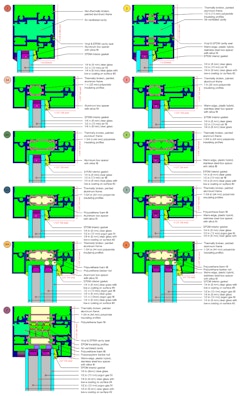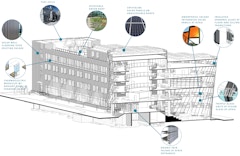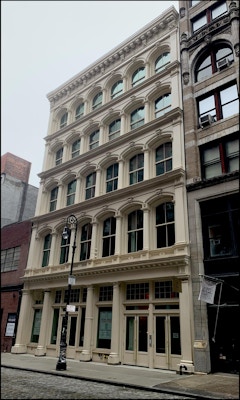
Thermal Performance of Closed Cavity Facades
Closed cavity facades (CCF), a configuration of Double Skin Facade (DSF), consists of a double-glazed unit on the inner layer and single glazing on t…

Closed cavity facades (CCF), a configuration of Double Skin Facade (DSF), consists of a double-glazed unit on the inner layer and single glazing on t…

Architects specify curtain wall thermal performance criteria and usually identify simple modeling software, like THERM, to perform thermal analysis t…

Double-Skin Facades (DSF) are well-known to boost the thermal performance of a façade: they can provide extra insulation in the wintertime and lower …

This paper discusses a simulation study of different window systems, where heat transfer simulations were performed to investigate thermal performanc…

Incorporating a novel, transparent monolithic aerogel into insulated glass units (IGUs) for windows and building enclosures will provide the equivale…

Ever-increasing performance requirements in the latest version of the energy codes are compelling project teams to consider the thermal performance o…

The real estate market continues to demand “all glass” buildings often to the detriment of human comfort and thermal performance. For an office build…

As awareness around the seismic performance of buildings grows, it is becoming increasingly necessary to integrate seismic expansion joint cover syst…

Thermal bridging through building façades have been overlooked by designers and building energy codes and standards in the past, which has led to hig…

As the first phase of a $4 billion dollar, 180-acre, 60 building government preservation project in Washington DC, this case study reviews the envelo…

As architects and designers we understand the urgency of addressing the building sector’s role in the ongoing environmental crisis. Architecture2030 …

The historical focus on reducing the carbon footprint of a building has recently shifted to include more emphasis on embodied carbon, the carbon emit…

The subject of this case study is the design and construction of a custom corrugated-geometry facade featuring pre-patinated copper and glass for an …

Thermal-break-blanket technology is a novel and high-performance thermal break solution for aluminum curtain walls. The thermal-break-blanket is inst…

Over the years, the industry has relied heavily on the increasing performance of low-e coatings to drive window U-factors (thermal transmittance) low…

Glass spandrels are a common design strategy utilized to opacify floor levels in building facades. These opaque glass assemblies are integrated into …

This paper analyzes sustainable retrofit strategies for an existing research laboratory building, located in a cold climate. This facility is compose…

It is commonly thought that fenestration U-factor is not a key determinant in the performance of facades in hot climates, and generally the focus of …

In 1871, a fourth level Architecture course was offered in New York City that instructed on topics such as heating, ventilation and circulation of wa…

Today, about 40% of all buildings in the U.S. still have single-pane windows, and ~70% of the existing building stock is estimated to suffer from und…